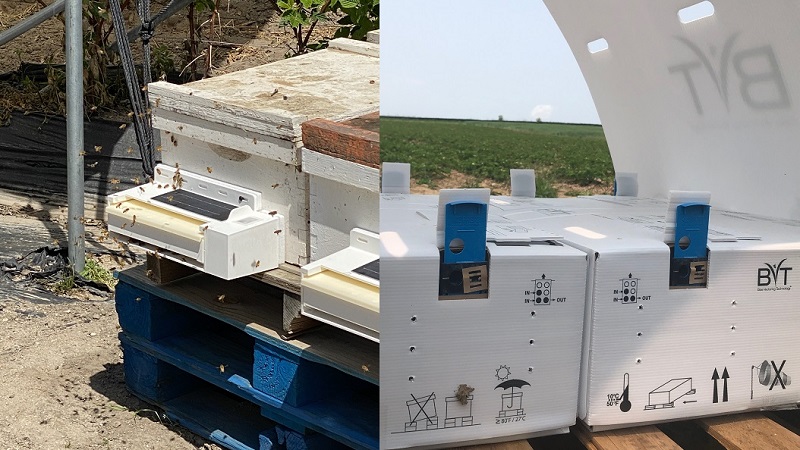Florida Citrus Hurricane Recovery Getting Extra Boost
With another Atlantic hurricane season quickly approaching, some good news is showing up on the radar for Florida’s citrus producers still reeling from last year’s tropical punch. Along with new details regarding eligibility for the agency’s recently introduced 2017 Wildfires and Hurricanes Indemnity Program (WHIP), U.S. Secretary of Agriculture Sonny Perdue also has announced $340 million available to Florida citrus growers through a block grant for Hurricane Irma losses for the current season through 2020.
The aid is intended for reimbursement of costs associated with buying and planting replacement trees – including resetting and grove rehabilitation, and for repair of damage to irrigation systems among other impacts.
In total, USDA’s Farm Service Agency (FSA) will deploy up to $2.36 billion that Congress appropriated through the Bipartisan Budget Act to help farmers with recovery of their agricultural operations in at least nine states with hurricane damage and other states impacted by wildfire.
According to USDA, key updates on WHIP 2017 include:
- Hurricane Recovery: To be eligible a crop, tree, bush or vine must be located in a primary disaster county with either a Presidential declaration or a Secretarial designation due to a 2017 hurricane. Crops, trees, bushes or vines located in other counties may also be eligible if the producer provides documentation the loss was caused by a 2017 hurricane.
- Wildfire Recovery: Any crop, tree, bush or vine, damaged by a 2017 wildfire is eligible.
- Eligible Producers: Eligibility will be determined on an individual basis, using the level of insurance coverage purchased for 2017 for the total crop acres on the area for which the WHIP application is made. Eligible producers who certify to an average adjusted gross income (AGI) of at least 75% derived from farming or ranching, including other agriculture and forestry-based businesses during the tax years 2013, 2014 and 2015, will be eligible for a $900,000 payment limitation with verification. All other eligible producers requesting 2017 WHIP benefits will be subject to a $125,000 payment limitation.
- Crop Insurance Requirement: Both insured and uninsured producers are eligible to apply for WHIP. However, all producers opting to receive 2017 WHIP payments will be required to purchase crop insurance at the 60% coverage level, or Noninsured Crop Disaster Assistance Program (NAP) at the 60% buy up coverage level if crop insurance is not available. Coverage must be in place for the next two applicable crop years to meet program requirements.
- Acreage Reporting Requirements: In addition, for the applicable crop years, all producers are required to file an acreage report and report production (if applicable).
- Payment Formula: FSA will calculate WHIP payments with this formula: Payment = Expected Value of the Crop x WHIP Factor – Value of Crop Harvested – Insurance Indemnity
The WHIP factor ranges from 65% to 95%. Producers who did not insure their crops in 2017 will receive a 65% WHIP Factor. Insured producers, or producers who had NAP, will receive between 70% and 95% WHIP Factors; those purchasing higher levels of coverage will receive higher WHIP Factors.
In a memo sent out to Florida Citrus Mutual (FCM) members following the USDA update, FCM Executive VP and CEO Mike Sparks relayed the following sentiment: “I would like to extend a sincere thank you to U.S. Agriculture Secretary Sonny Perdue for his hard work on this issue. Gov. Rick Scott, Agriculture Commissioner Adam Putnam, Senators Bill Nelson and Marco Rubio, and Congressman Tom Rooney also have done yeoman’s work on our behalf and we are very appreciative.”
While details are still forthcoming about the hurricane recovery aid, Ray Royce, Executive Director of the Highlands County Citrus Growers Association, is offering the following advice to his grower-members:
“It would seem the two things that growers should be considering doing at this time are:
1) Making sure your farm records with FSA are current and up to date.
2) Working through your records, hurricane loss documentation, etc. in order to determine what you expected your crop size (and ultimate revenue stream) to be on Sept. 10, 2017.
“It is not clear what type of documentation will be required to determine the first value to be utilized in the payment calculation, but if you had insurance and the adjusters accepted a “certain loss rate number” that would probably be a good factor.”
Stay tuned.









